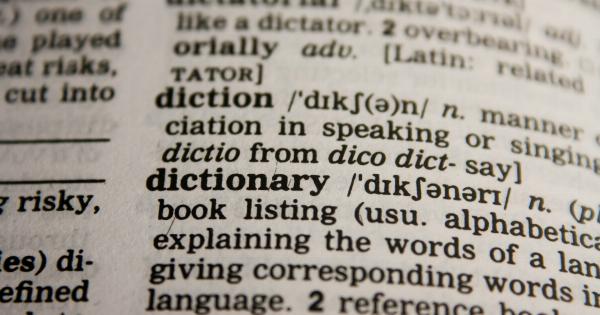Teaching English to children with attention deficits can be challenging for educators. These students may struggle with staying focused on lessons and retaining information.
However, there are strategies that can be implemented to help these students succeed in learning the English language. Here are ten effective strategies:.
1. Use Visual Aids
Visual aids can help students with attention deficits to stay engaged and focused on the lesson. Teachers can use pictures, diagrams, and charts to illustrate concepts and make them easier to understand.
This method appeals to the visual learning style, which can be beneficial for these students.
2. Incorporate Movement
Children with attention deficits often have a lot of energy and need to move around. Teachers can incorporate movement into lessons to keep these students engaged.
For example, they can use games that involve physical activity or have students act out skits to practice speaking English.
3. Break Lessons into Short Segments
It can be difficult for children with attention deficits to focus for extended periods of time. Teachers can break lessons into shorter segments, allowing students to take breaks in between.
This method can help students stay focused and retain information better.
4. Use Multisensory Learning Techniques
Using multisensory learning techniques can be helpful for students with attention deficits. Teachers can incorporate auditory, visual, and kinesthetic learning activities into lessons.
This method can help students learn and retain information by engaging multiple senses.
5. Provide Frequent Positive Feedback
Children with attention deficits can benefit from frequent positive feedback. Teachers can reinforce good behavior and academic progress by praising students when they make improvements. This method can boost self-esteem and motivation in these students.
6. Use Repetition
Repetition can be helpful for students with attention deficits in remembering information. Teachers can repeat key vocabulary words, grammar rules, and sentence structures to reinforce learning. This method can help students retain information better.
7. Incorporate Technology
Technology can be a useful tool for teaching English to children with attention deficits. Teachers can use interactive games, podcasts, and videos to engage students and reinforce learning.
This method can be particularly effective for visual and auditory learners.
8. Provide Clear Instructions
Clear instructions are essential for students with attention deficits to understand what is expected of them. Teachers should provide explicit instructions that are easy to follow and understand.
This method can help students feel more confident and successful in their learning.
9. Use Positive Reinforcement
Positive reinforcement can be effective for motivating students with attention deficits. Teachers can reward good behavior and academic progress by providing stickers, tokens, or other incentives.
This method can help students stay motivated and engaged in their learning.
10. Differentiate Instruction
Every student learns differently, and it is important for teachers to differentiate instruction to meet the needs of individual students.
Teachers can provide different learning activities, assignments, and assessments to accommodate the needs of students with attention deficits. This method can help students feel more engaged and successful in their learning.



























